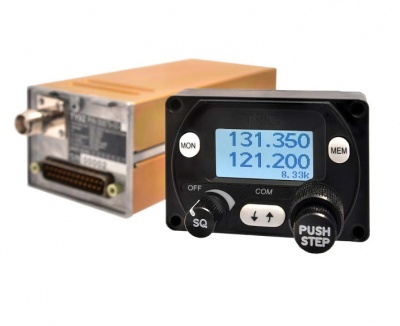With a wide variety of 8.33kHz radios available, the choice can be overwhelming. Here are some key considerations regarding ease of use, physical size, and choosing the best model for your needs.
Ease of Use: Channel Selection and Memory Capacity
The ease with which you can change channels is a key differentiator between radio models.  Most radios use a combination of button presses and knob rotations to adjust frequencies. Of all the models, the TRIG TY91 radio stands out for its simplicity. The main knob allows you to rotate and select frequencies quickly and intuitively.
Most radios use a combination of button presses and knob rotations to adjust frequencies. Of all the models, the TRIG TY91 radio stands out for its simplicity. The main knob allows you to rotate and select frequencies quickly and intuitively.
Other models are slightly less intuitive but offer similar functionality. Many radios now include memory capacity for storing frequently used frequencies. While most radios can store at least 10, some offer storage for up to 100 frequencies. Consider the importance of this feature based on your flying needs.
Physical Size and Shape: Panel Cutouts
When upgrading your radio, you need to consider whether it will physically fit in your panel. Newer radios typically fit in a standard 57mm round cutout, but older radios may be square or oblong. You may need an adapter plate to fit the new radio into your panel. Ensure that your wiring harness and antenna cable will be long enough to reach the new radio once it’s installed.
Choosing the Right Model
The model you choose will depend on your budget and the complexity of your aircraft’s setup. If your budget allows, we recommend Becker radios for their high quality and durability. Navboys can supply these for you. For those with tighter budgets, the TQ KRT2 offers a good compromise, though you should consider upgrading to an Electret microphone for better performance. For club aircraft, the TRIG radios offer superior ease of use, durability, and flexibility, particularly in fleets where multiple users may be configuring the radio.
Long-Term Investment
Replacing your radio is a long-term investment, so it's worth spending a little extra to get the best model. Consider the ease of use, durability, and the likelihood that you will need to upgrade again in the future. If you plan carefully, your new 8.33kHz radio should last as long as your current radio or longer.
Ready for More?
Read our next article on summary of 8.33kHz radio replacements to get an overview of the best models available.
Continue to the Next Article